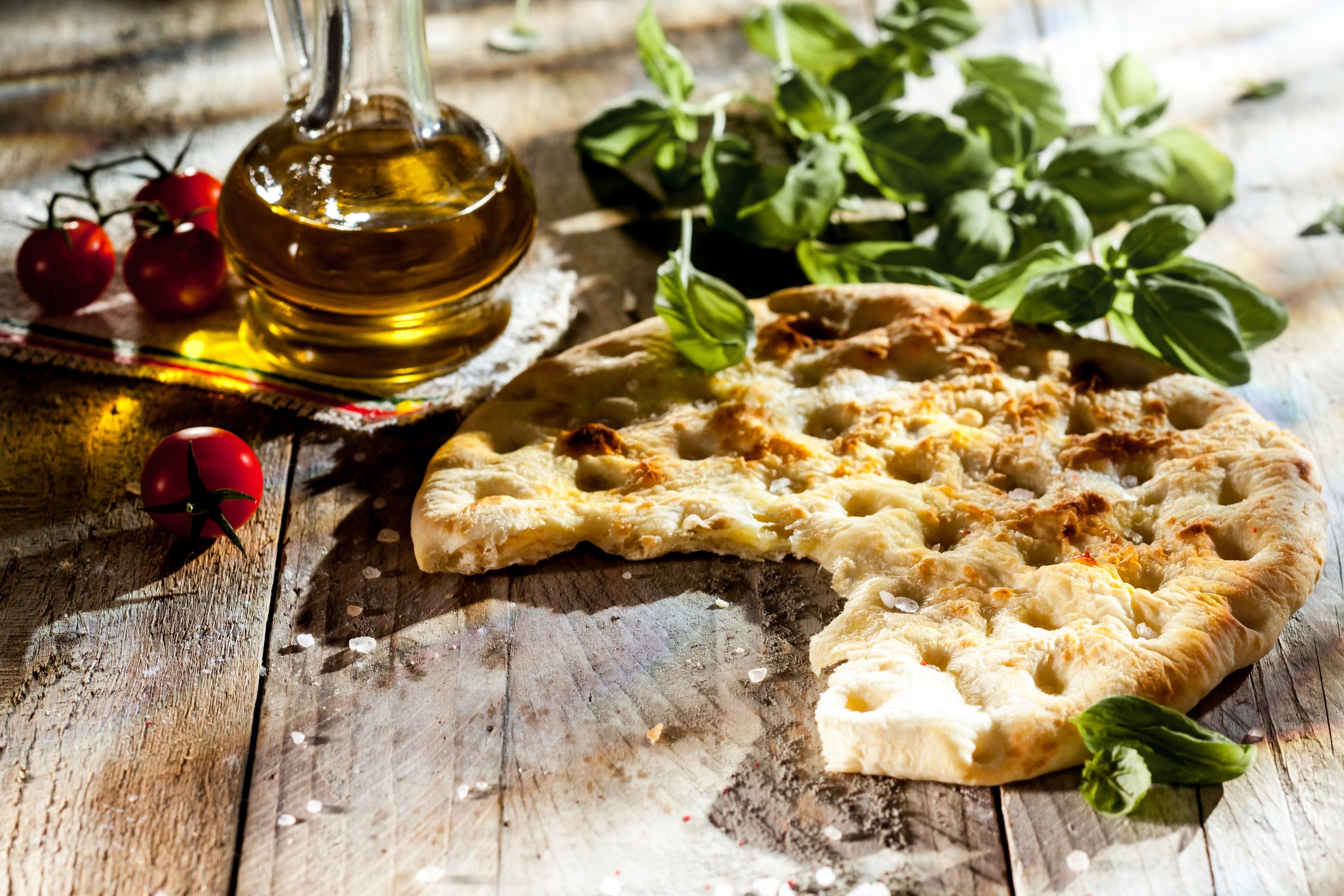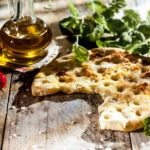If you’re looking for a homemade bread that’s easy to make and delivers on flavor, look no further than classic focaccia bread. With a slightly chewy texture and delicate golden crust, this airy bread is perfect for serving as a side to your favorite meals or as sandwich bread.
Originating from Italy, focaccia bread is a flat oven-baked bread that is similar in style and texture to pizza dough. Its versatility and delicious taste make it a popular choice in Italian cuisine. One popular style of this bread is the focaccia al rosmarino, which is typically served as an antipasto, appetizer, table bread, or snack.
To achieve the perfect texture and flavor, our recipe involves a final rise that includes a drizzle of salt water over the dough. This technique helps to deepen the bread’s flavor and give it a unique twist on the classic recipe.
Whether you are a seasoned bread maker or just starting out, our recipe for classic focaccia is sure to impress your friends and family. Give it a try today and savor the delicious taste of homemade bread that’s perfect for any occasion or meal.
Serve this tasty bread with Shrimp with Garlic Cream Sauce Over Linguine, Carbonara Greek Yogurt or a simple recipe like Pasta with Tomato & Veg sauce.
PrintThe Best Focaccia Bread
It’s easy to make classic focaccia bread at home. Our version is airy and slightly chewy, with a delicate golden crust.
- Prep Time: :25
- Cook Time: :35
- Total Time: 2:25
- Yield: 8 1x
- Category: Bread
- Method: Baked
- Cuisine: Italian
Ingredients
- Dough:
- 6 cups all-purpose flour (see Cook’s Note)
- One 1/4-ounce package active dry yeast (2 1/4 teaspoons)
- 2 teaspoons sugar
- 2 1/2 cups warm water (80 to 85 degrees F)
- 1/2 cup extra-virgin olive oil
- 2 tablespoons kosher salt
- Brine and Finish:
- 1 1/2 teaspoons kosher salt
- Nonstick cooking spray, for the plastic wrap
- Flaky sea salt, for sprinkling
- 3 tablespoons extra-virgin olive oil
Instructions
- For the dough: Whisk together the flour, yeast and sugar in the bowl of a stand mixer. Using the dough hook on low speed, stir in the warm water and 2 tablespoons of the olive oil, mixing until the flour is completely moistened. Let stand 5 minutes.
- Add the salt and knead on medium speed for 5 minutes. (The dough will tighten up, then begin to relax. After 5 minutes it will be very wet and stick to the bottom of the mixer but not the sides.)
- Rub 2 tablespoons olive oil around the bottom and sides of a large mixing bowl (big enough to hold at least double the volume of the dough). Using a scraper or spatula, transfer the dough to the bowl, flipping once to coat completely with oil. Cover with plastic wrap and let sit until doubled in size, about 2 hours.
- Pour the remaining 1/4 cup olive oil into the bottom of an 18-by-13-inch rimmed baking sheet. Use your hands to evenly distribute the oil along the bottom and up the sides. Scrape the dough into the baking sheet, flattening it slightly with your hands. Flip the dough once and gently stretch it to fit into an even layer in the baking sheet. (The dough may not stretch to the edges at this point. If it starts to pull back, let rest 10 minutes and re-stretch, making sure to pull from the center as well as the edges to get an even thickness.) Use your fingertips to make dimples over the surface of the focaccia, pressing firmly but not so hard you make holes in the dough.
- For the brine and finish: Dissolve the kosher salt in 1/3 cup warm water. Drizzle over the surface of the focaccia, letting it pool in the dimples. Cover loosely with plastic wrap that has been lightly sprayed with nonstick cooking spray. Let sit in a warm place for 45 minutes to relax and rise again.
- Meanwhile, preheat the oven to 450 degrees F.
- Remove the plastic wrap from the dough and sprinkle with flaky sea salt. Bake, rotating the baking sheet once halfway through, until the focaccia is deep golden brown on the top and bottom, 30 to 35 minutes. Drizzle with the olive oil and let sit for 5 minutes. Use a spatula to remove the focaccia to a wire rack to cool completely.
Notes
- Cook’s Note: When measuring flour, we spoon it into a dry measuring cup and level off excess. (Scooping directly from the bag compacts the flour, resulting in dry baked goods.)

